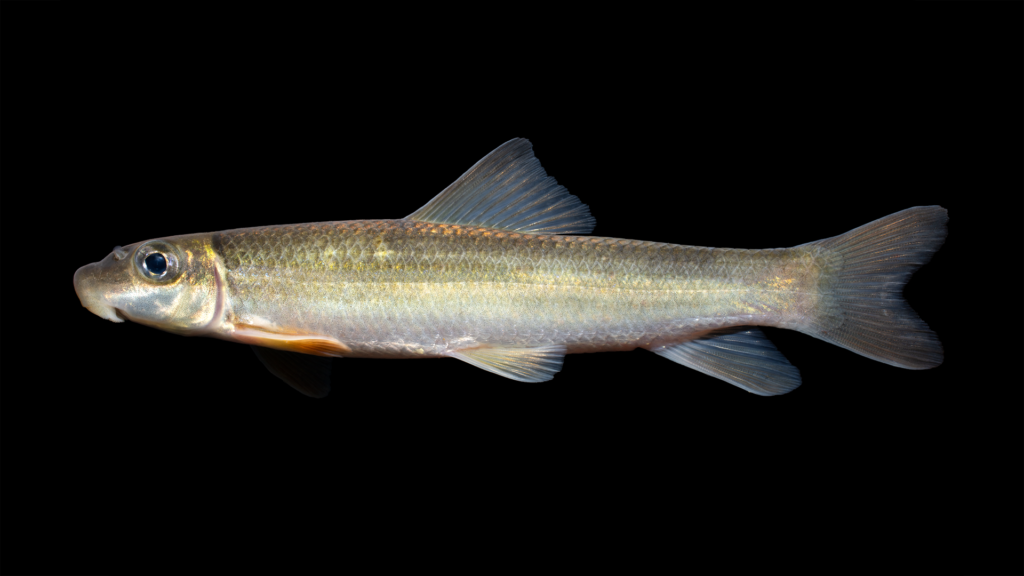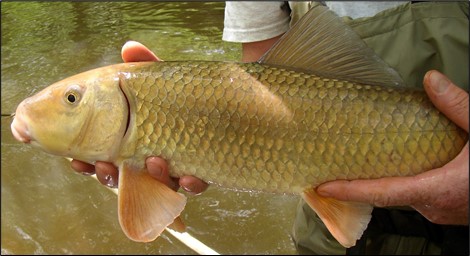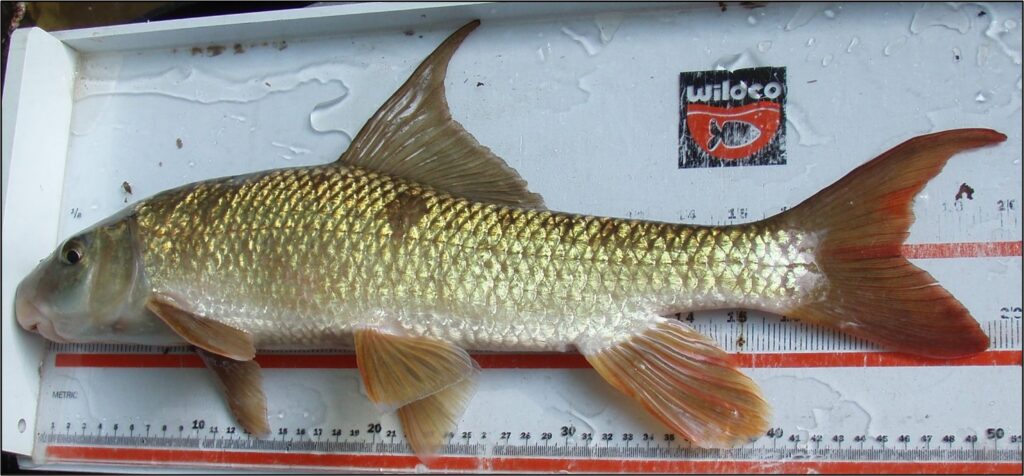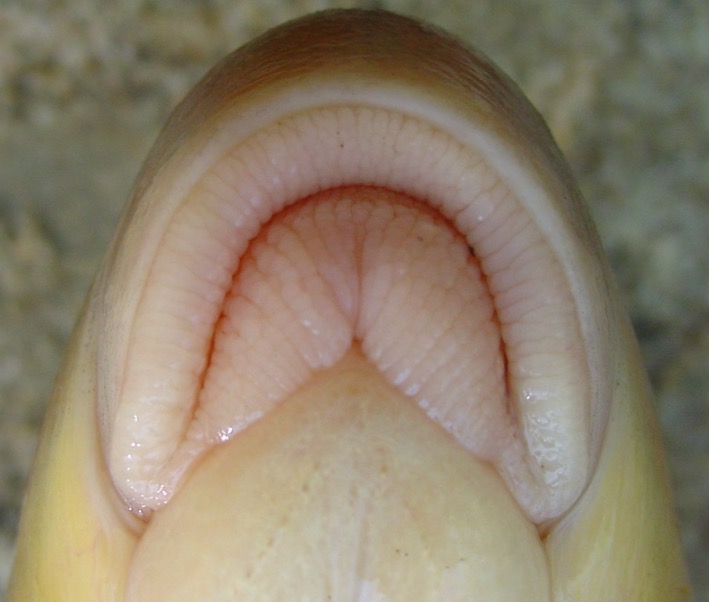By the NCFishes.com Team
The correct identification of suckers (Family Catostomidae) may be intimidating to those students or citizens just beginning to study our extremely diverse and colorful freshwater fish fauna. With some practice and with a keen eye to details, one can master this skill, although it might take a while and require handling a lot of fishes. Key characteristics for identification include the shape and texture of the lips (Hogue and Tracy 2014), lateral line scale counts, dorsal fin rays counts, and pharyngeal teeth structure (please refer to the downloadable link at the bottom of this post – Identification Key to the Species of Suckers (Family Catostomidae) in North Carolina).
In our state there are 29 species of suckers including 5 undescribed species (Table 1). You might have heard fishermen calling them Mullets, Redhorses, Hoovers, Creek Trout, Razor Back, or many more colloquial names. But each species has its own scientific (Latin) name, which coincidentally actually means something (please refer to The Meanings of the Scientific Names of Suckers, pages 17 and 18 in the downloadable link provided at the bottom of this post), and an American Fisheries Society-accepted common name. They are found throughout North Carolina in streams, big rivers and reservoirs from Cherokee County in the Mountains to Dare County along the Albemarle Sound. Every county has at least one species, but Stokes County takes the prize for having the most – 11 species! They are Northern Hog Sucker, Roanoke Hog Sucker, Notchlip Redhorse, Golden Redhorse, V-lip Redhorse, Bigeye Jumprock, Blacktip Jumprock, “Brassy” Jumprock, White Sucker, Rustyside Sucker, and Quillback (Beane 2017; Hogue and Tracy 2014).
| Scientific Name / American Fisheries Society Accepted Common Name | Scientific Name / American Fisheries Society Accepted Common Name |
|---|---|
| Carpiodes carpio, River Carpsucker | Moxostoma breviceps, Smallmouth Redhorse |
| Carpiodes cyprinus, Quillback | Moxostoma carinatum, River Redhorse |
| Carpiodes sp. "Atlantic" Highfin Carpsucker, | Moxostoma cervinum, Blacktip Jumprock |
| Carpiodes sp. "Carolina" Quillback, | Moxostoma collapsum, Notchlip Redhorse |
| Catostomus commersonii, White Sucker | Moxostoma duquesnei, Black Redhorse |
| Erimyzon oblongus, Creek Chubsucker | Moxostoma erythrurum, Golden Redhorse |
| Erimyzon sucetta, Lake Chubsucker | Moxostoma macrolepidotum, Shorthead Redhorse |
| Hypentelium nigricans, Northern Hog Sucker | Moxostoma pappillosum, V-lip Redhorse |
| Hypentelium roanokense, Roanoke Hog Sucker | Moxostoma robustum, Robust Redhorse |
| Ictiobus bubalus, Smallmouth Buffalo | Moxostoma rupiscartes, Striped Jumprock |
| Ictiobus cyprinellus, Bigmouth Buffalo | Moxostoma sp. "Brassy" Jumprock |
| Ictiobus niger, Black Buffalo | Moxostoma sp. "Carolina" Redhorse |
| Minytrema melanops, Spotted Sucker | Moxostoma sp. "Sicklefin" Redhorse, |
| Moxostoma anisurum, Silver Redhorse | Thoburnia hamiltoni, Rustyside Sucker |
| Moxostoma ariommum, Bigeye Jumprock |
Three species are found in only one river basin: Rustyside Sucker and Bigeye Jumprock which are found only in the upper Roanoke River basin and Black Buffalo found only in the lower French Broad River basin. White Sucker is our most widely distributed species; it is found in 15 of our 21 river basins, but absent from waters east of Interstate 95 in the Chowan, Albemarle Sound, White Oak, Shallotte, Waccamaw, and Lumber basins (Tracy et al. 2020).

More species of suckers, 17, are found in the Yadkin River basin than in any of the other 21 basins. Those 17 species include 4 species that have been introduced from other basins in North Carolina – Northern Hog Sucker, Roanoke Hog Sucker, Smallmouth Buffalo and Striped Jumprock, and 1 species introduced from outside the state, Bigmouth Buffalo. Our least speciose basin is the New basin where only Northern Hog Sucker and White Sucker are found.
Twelve species are considered imperiled in North Carolina: 1) State Endangered – Robust Redhorse and Rustyside Sucker; 2) State Threatened – Bigeye Jumprock, Moxostoma sp. “Sicklefin” Redhorse and Moxostoma sp. “Carolina” Redhorse; 3) State Special Concern – River Carpsucker and Carpiodes sp. “Atlantic Highfin” Carpsucker; and 4) Significantly Rare – Quillback, Carpiodes sp. “Carolina” Quillback, Smallmouth Buffalo, Black Buffalo, and Smallmouth Redhorse (NCAC 2017; NCNHP 2018; NCWRC 2017).

So, don’t shy away from learning more about this fascinating family of freshwater fishes. If you have troubles with your identifications, just send us (https://ncfishes.com/contact/) an e-mail and include as many quality digital photographs as you can along with all the pertinent locality descriptors so that we will know from where the fish came.

